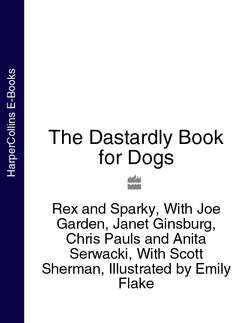Читать книгу The Dastardly Book for Dogs - Chris Pauls - Страница 8
The Roots of Barks
ОглавлениеHave you ever wondered how the barks we use every day came to be? Perhaps one day an ambitious pup will list the etymological roots of all the nearly 180,000 barks currently in use, but until that dictionary is written, here are the origins of some of our favourites.
Ruhruhruhruhruh. Meaning ‘someone is at the door’, this bark is derived from the ancient Indo-European barks ‘rrrrrrr’, meaning ‘alert’, and ‘mmbuhmmbuh’, meaning ‘visitor’.
Ooowwww! Ooowww Asztalos, a Hungarian Kuvasz, is considered the first dog to identify the distance to the moon based on how long it took his howled name to bounce back to earth. After this landmark discovery, in 1379, Asztalos’s first name became synonymous with moon-directed howls.
Grrrrr. The Grrrrrs were a pack of Pharaoh Hounds charged with sitting at the royal throne of Amenhotep IV (aka Akhenaten). Their job was to instil fear and humility in foreign envoys by emitting a low, threatening growl throughout the course of a visit with the pharaoh.
Woof. Though there is some debate about woof’s etymological roots, it is generally accepted that the common greeting was first used in the early part of the fifth millennium when the Chinese refined animal-husbandry techniques. The Chinese would introduce themselves to their canine workers by saying, ‘Wo-duh ming-d’zi …’ (‘My name is …’), and the dog would respond likewise, ‘Wo-duh ming-d’zi …’ Over time, dogs learned to simplify their language for more efficient communication, and the greeting became shortened to ‘wod’z’, which in turn became ‘woof’.
Arf. In Olde Bark, ‘awrk’ meant ‘at the ready’, which a dog would bark out at the beginning of a joust to signal the opposing riders to raise their lances. When the bark crossed the English Channel into France, ‘awrk’ became ‘arf’, and the meaning expanded. Today we use ‘arf’ to command an owner to lift a ball and prepare to throw it.
Ruff. Like many slang terms in our society, ‘ruff’ originated in the dog’s home and was first popularized by inmates. Bad doggies in the Battersea Dogs’ Home used the word around the keepers as part of a complex coded language. When a dog would plot an escape, he would mumble the word ‘ruff’ under his breath because it could be uttered with minimal jowl flapping (which keepers looked for as a sign of mischief afoot). The word is now used whenever a dog wants to skedaddle, even though an owner is content to stay in the house.
Yip! Yip! Yip! A relatively new bark, ‘Yip! Yip! Yip!’ derived from a Spanish bark that came into fashion quite circuitously. Queen Isabella II of Spain had an esteemed Ratonero Bodeguero Andaluz (translation: Andalusian Wine Cellars’ Ratting Dog) named Rodrigo who suffered from a terrible stuttering problem. When the terrier would find a rat in the queen’s wine cellar he would try to alert the cellar master in Spanish by saying, ‘Aquí!’ (‘Here!’). Unfortunately all Rodrigo could muster was, ‘Aq – aq – aq!’ Rodrigo was embarrassed, but the queen loved her Ratonero Bodeguero Andaluz so much that she ordered all the dogs of Spain to bark with a stutter. Around the turn of the twentieth century, ‘Aq – aq – aq’ was crudely Anglicized into ‘Yip! Yip! Yip!’ but it remained the bark of choice for the dogs of heiresses and royalty alike.
